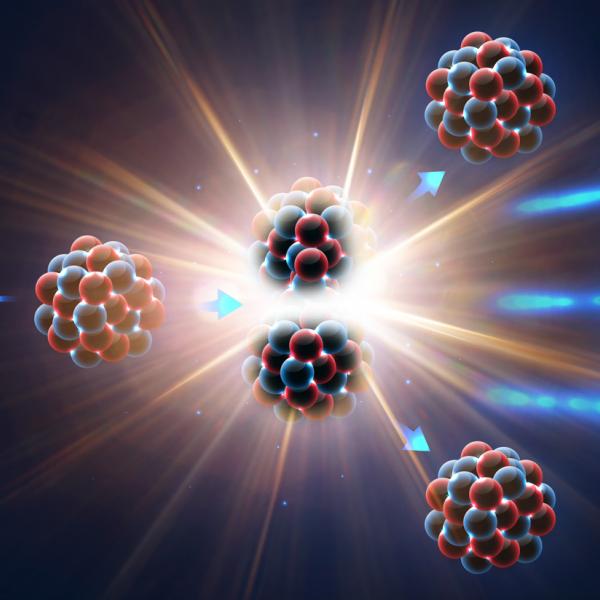
क्या हार में क्या जीत में ! किंचित नहीं भयभीत मैं
संधर्ष पथ पर जो मिले यह भी सही वह भी सही।
वरदान नहीं मानूंगा, हार नहीं मानूंगा |
General Physics
PHYSICS
6/2/20242 min read


Nuclear Reaction
A nuclear reaction involves changes in an atom's nucleus and can release or absorb significant amounts of energy.
Types of Nuclear Reactions
Nuclear Fission:
The process in which a large nucleus splits into smaller nuclei, along with the release of energy.
Commonly occurs with heavy elements like uranium-235 or plutonium-239.
Produces a significant amount of energy, which is harnessed in nuclear power plants.
Releases additional neutrons that can induce further fission reactions, potentially leading to a chain reaction.
Nuclear Fusion:
The process in which two light atomic nuclei combine to form a heavier nucleus, releasing energy.
Occurs naturally in stars, including the sun, where hydrogen nuclei fuse to form helium.
Requires extremely high temperatures and pressures to overcome the electrostatic repulsion between nuclei.
Produces even more energy than fission, with minimal radioactive waste.
Radioactive Decay:
A spontaneous process in which an unstable atomic nucleus loses energy by emitting radiation.
Common types of decay include alpha decay, beta decay, and gamma decay.
Leads to the transformation of one element into another.
Mechanisms and Energy Release
Binding Energy:
The energy required to hold the nucleus together.
Differences in binding energy between reactants and products result in the release or absorption of energy in nuclear reactions.
Energy Release:
In fission, energy is released due to the conversion of mass into energy, described by Einstein's equation E=mc^2.
In fusion, energy is released when light nuclei combine to form a more stable, heavier nucleus with lower total mass.
Applications
Nuclear Power:
Nuclear fission is used in power plants to generate electricity.
Controlled fission reactions produce heat, which is used to generate steam that drives turbines.
Nuclear Weapons:
Both fission (atomic bombs) and fusion (hydrogen bombs) reactions are used in nuclear weapons.
Fusion weapons, also known as thermonuclear weapons, derive their explosive power from both fission and fusion reactions.
Medical Applications:
Radioisotopes produced in nuclear reactions are used in medical imaging and cancer treatment.
Techniques such as PET scans and radiation therapy rely on the principles of nuclear reactions.
Scientific Research:
Nuclear reactions are fundamental to understanding the properties of atomic nuclei.
Used in particle accelerators and research reactors for various scientific studies.
Challenges and Future Directions
Nuclear Waste:
Fission reactions produce radioactive waste that requires long-term management and disposal.
Finding safe and effective ways to handle nuclear waste remains a significant challenge.
Nuclear Safety:
Ensuring the safe operation of nuclear reactors is critical to prevent accidents and radiation leaks.
Advances in reactor design and safety protocols aim to mitigate these risks.
Fusion Research:
Achieving controlled nuclear fusion for practical energy production is a major scientific goal.
Research projects like ITER (International Thermonuclear Experimental Reactor) aim to make fusion a viable energy source.
Nuclear reactions hold the potential for significant energy production and have diverse applications in power generation, medicine, and scientific research.
